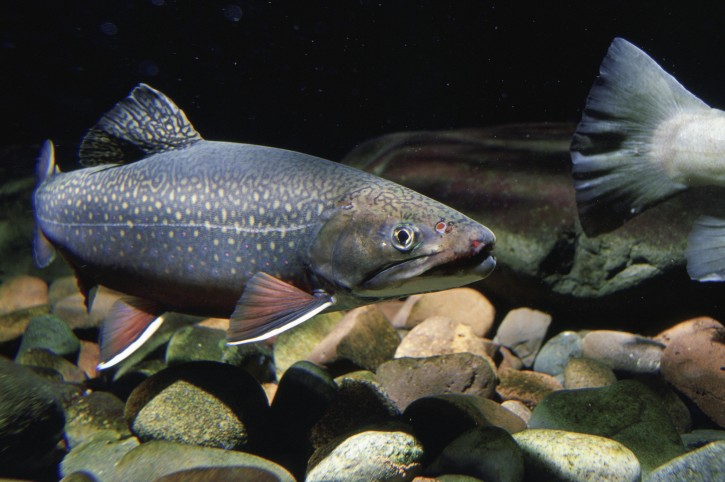In spite of their common name, Brook Trout (Salvelinus fontinalis) are actually a species of char and are more closely related to their larger cousins, lake trout, than they are to such members of the Salmo genus as rainbow and brown trout. Like all salmonidae (the order encompassing trout and salmon), brook trout feed actively and sometimes aggressively throughout the winter and are one of the easier salmonid species to catch through the ice.
Typical size
While anglers occasionally catch brook trout that are greater than 20-inches in length and five pounds in weight, most of an ice angler’s typical catch will consist of fish in the 6 to 14-inch range. In many waters, most of those fish will be recently stocked (within one year) and unusually voracious. Recently stocked brook trout are often lesser table fare when compared to fish that have been in the wild for a few years.
Tackle, lures, and bait
Tackle
An ultra-light jigging rod and reel rigged with light, 4-6 lb. test line is an ideal setup for fishing hardwater brookies. Tip-ups are also a highly effective tool for catching brook trout.
Lures
Any small, shiny, jig or lure suitable for panfish will also work for brook trout. I have found that basic metallic colors such as silver and gold to be more effective than florescent colored jigs but individual results are bound to vary. Artificial lures are usually most effective when tipped with bait.
Bait
Small baitfish (less than 3-inches in length) are common brookie bait. Earthworms are also highly effective when available.
Fishing methods
The best brook trout fishing will occur in one to eight feet of water where the bottom of the lake or pond consists largely of rocks and gravel. Bait should be suspended six inches to three feet under the ice and jigs should be given just enough movement to attract the attention of fish.
As table fare
The flesh of brook trout can range in color from with to reddish-orange and can range in flavor from light and sweet to rich and strong, similar to salmon. Recently stocked brook trout, however, tend to be a bit on the mushy and bland side.
Brookies are excellent kippered, but are otherwise best prepared by lightly seasoning and grilling or pan-frying in butter or olive oil until the skin is brown and crispy. Smaller fish can be prepared whole while larger specimens can be filleted.





